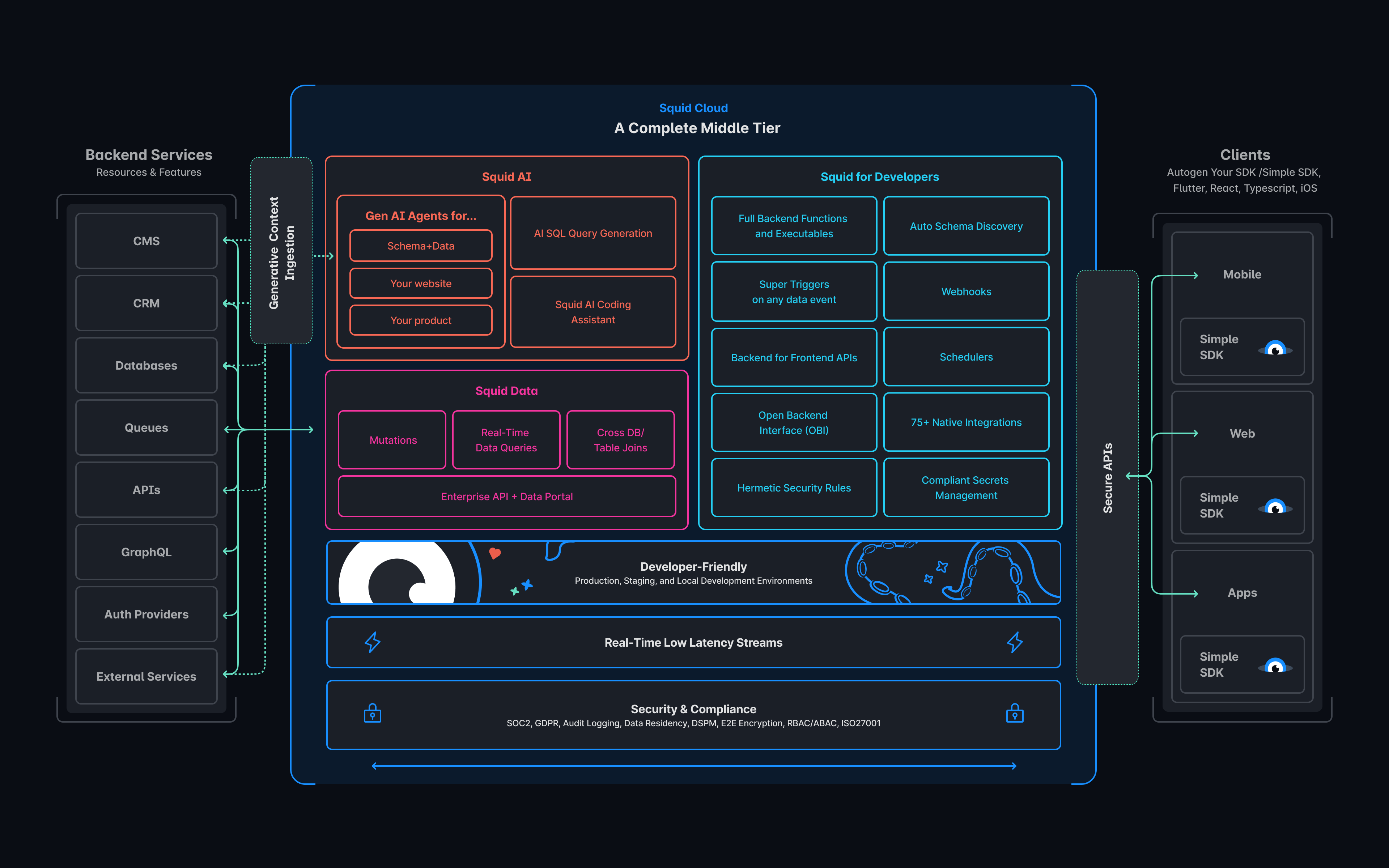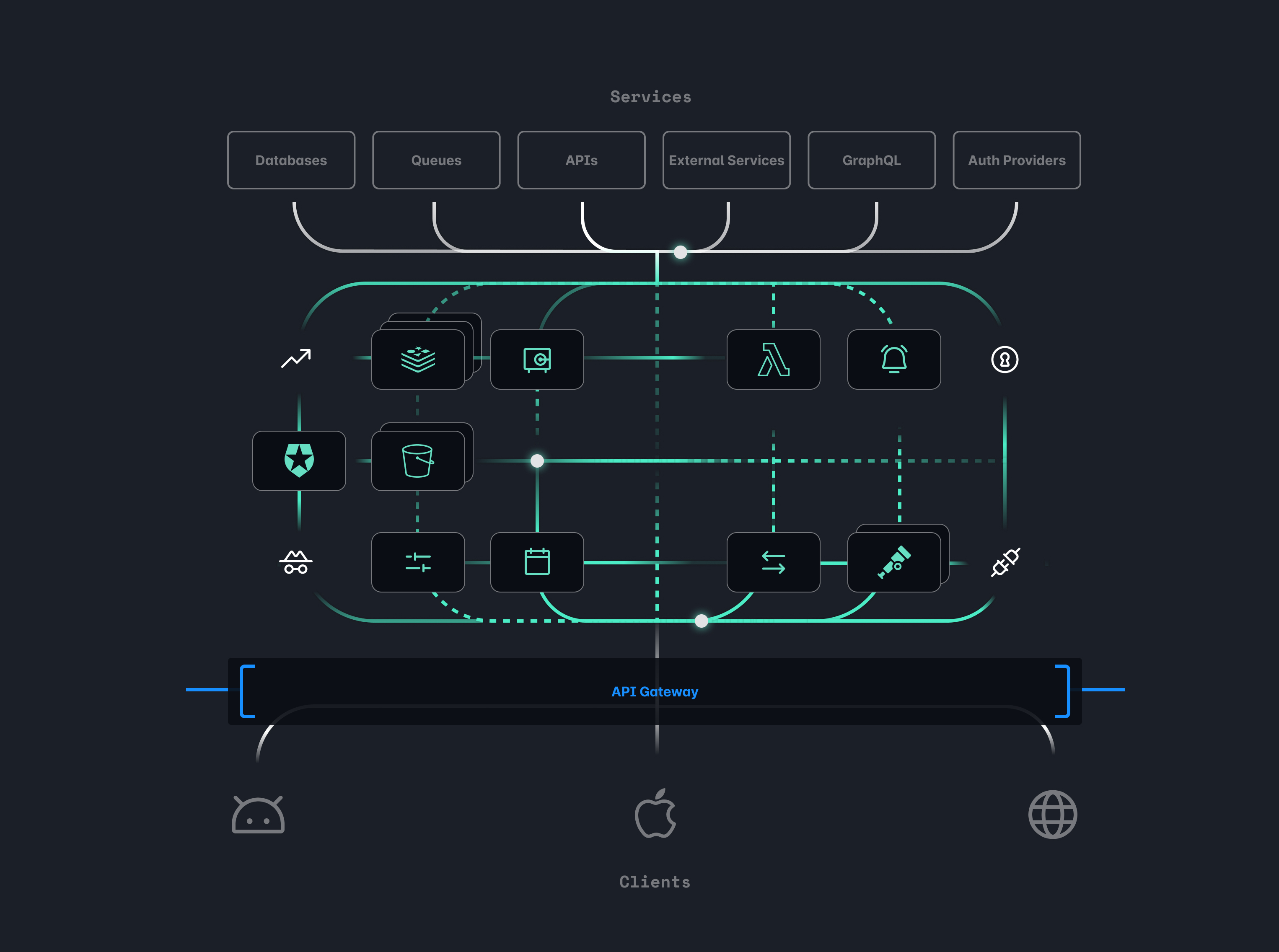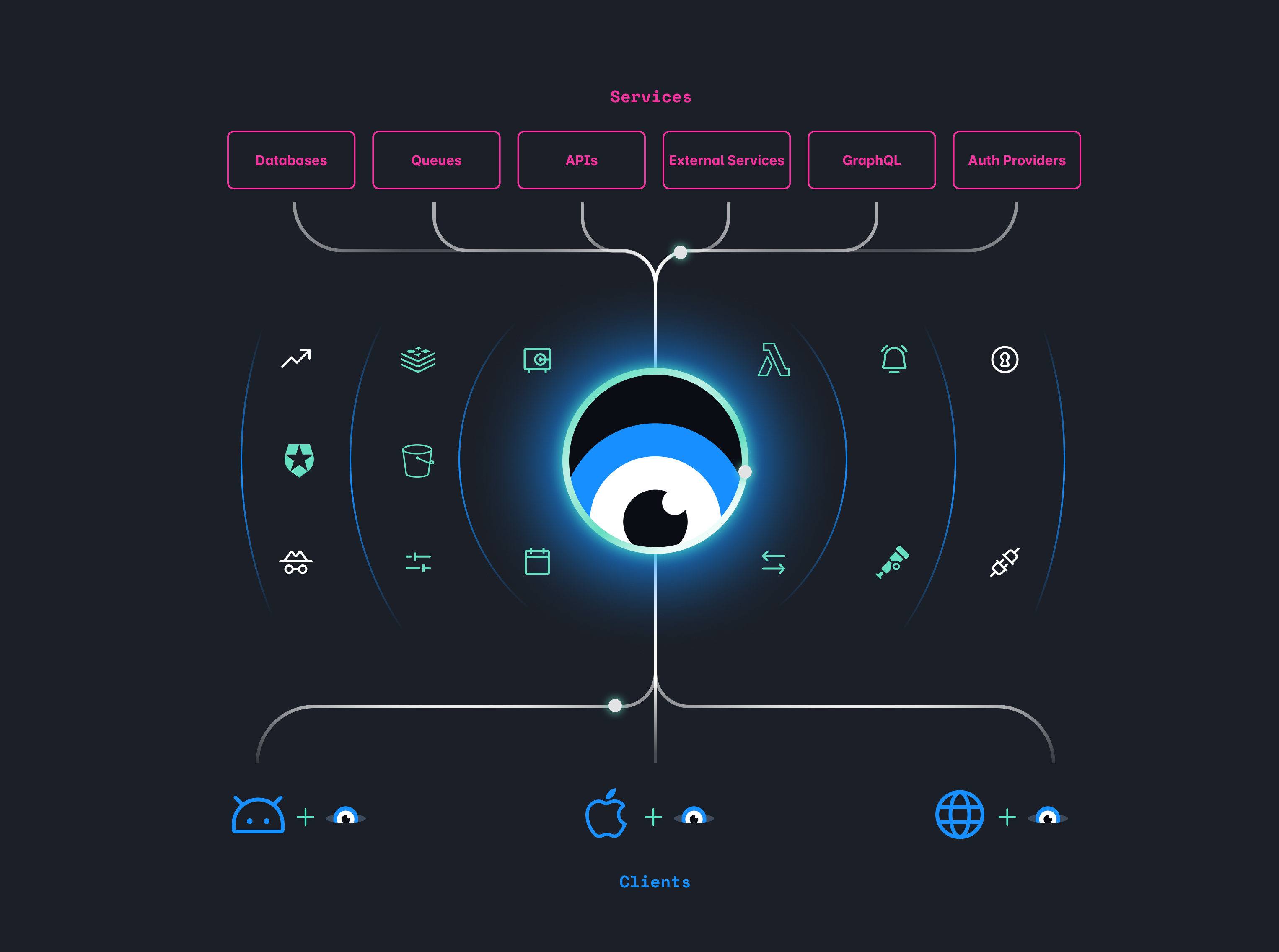What is Squid?
Squid is a serverless platform that makes it easy for developers to build and secure GenAI full-stack applications and workflows by connecting with databases, APIs, AI Profiles, and backend services to any frontend in a secure and scalable way. Developers can also apply turnkey Squid AI features to enhance both their productivity and their products.
With Squid, you can focus on coding great user experiences without having to worry about the complexities of the backend.
Squid's role as a RAG AI powerhouse
Squid's Retrieval-Augmented Generation (RAG) capabilities allow you to make the most of Large Language Model (LLM) AI solutions by providing your own context in the form of files, documents, websites, functions, and even your database data no matter where it's stored.
Squid provides three different RAG architectures depending on the use case:
- An architecture designed to use files, documents, and web pages as context, which is optimized for the unstructured data found in these documents. This solution most closely resembles the common RAG architecture.
- A solution that allows the user to provide external data using a function. The model determines when to trigger the function based on instructions, and then the function can access any external data source or even another AI model.
- A unique Universal RAG AI that utilizes data from any database you provide as context. You can interface with this solution in the Squid Console or from a client using Squid AI’s Query with AI functionality.
You can read more about Squid's RAG AI capabilities in our blog.
Our architecture
Squid is designed to be a single, uniquely powerful platform. It's the first platform that integrates the best of both serverless compute and real-time data streams into one offering that every application needs to be responsive, scalable, and secure.
No more worrying about DevOps, scaling, staging, or how to securely connect to a database — it's all built-in.
Although Squid is a fully featured middle tier platform, it's also straightforward and lightweight. You don't have to adopt and use every feature. Choose only the parts that make sense for your needs.
Life before and after Squid
Before Squid
This is a simplified diagram of what a typical application's architecture might look like. Each frontend application has its own middle tier that connects to the set of backend services it needs.
Every middle tier acts as an intermediary layer, taking requests from the frontend, processing them, and then communicating the required operations to the backend. Each icon represents one of a wide variety of tasks related to application operations and data processing.
This includes interpreting and processing user requests, applying business rules and ensuring that data flows correctly between the frontend and backend, data validation, transaction management, error handling and logging, access control, caching, data transformation, observability, and security.
The exact responsibilities of the middle tier can vary based on the specific architecture and design decisions of the application.
After Squid
As a complete middle-tier platform, Squid obviates the need to create and maintain your own middle tier for each application so developers can focus on building user value. We like to say, "We make your middle tier disappear."
Key benefits of using Squid
- Focus on features, not plumbing: Let Squid handle the plumbing and focus on the features that make your application unique.
- Plug-and-play AI: Squid lets you implement AI solutions on your data without the need to build a RAG pipeline.
- Incremental adoption: With Squid, you can gradually integrate the platform into your existing architecture without the need for a full rewrite. This means you can continue using your current frontend and backend code while incrementally adopting Squid's functionality and benefits.
- Secure and compliant: Built-in security best practices to keep your data and applications secure and compliant.
- Infinitely scalable: Scale to meet the needs of your application, whether it's handling millions of requests per second or just a few.
- Real-time by default: Keep clients up-to-date by streaming real-time data from/to different clients without writing boilerplate server code or inefficient polling.
- Cloud-agnostic: Choose the cloud that fits your needs and deploy your application with multiple zones/regions support.
- Connect your own database or backend: Integrate with your existing data sources and services without the need for a full rewrite.
- Flexible and customizable: Choose the best solution for your needs without limitations, and integrate smoothly with your existing architecture.
Whether you're a startup or a large enterprise, Squid is the platform you've been looking for.
To get started on your first Squid app, view the documentation to set up a full-stack demo app in under 5 minutes or build a Create-Read-Update-Delete (CRUD) app from scratch.


